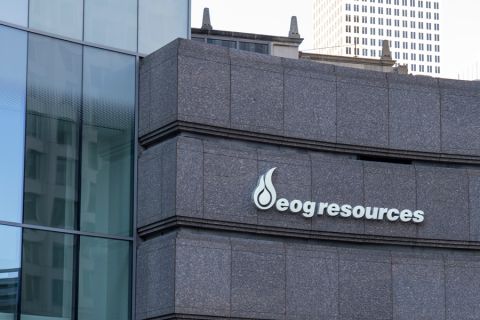
Many oil and gas companies, particularly the majors, have publicized their efforts to be good stewards of the environment, particularly on climate change.
But a new report from Carbon Tracker holds that if oil and gas companies truly mean to align their emissions targets with the Paris Agreement, they need to shrink in size and not proceed in developing reserves, current and future, that would not be economic in a scenario limiting temperature rise to 1.6 C.
For its analysis Carbon Tracker relied on the International Energy Agency’s Beyond 2 Degrees scenario (D2DS), which is in accord with the Paris Agreement’s goal to keep temperature rise “well below” 2 C. Rystad Energy provided project level emissions data to set company carbon budgets as “an incentive to reduce the emissions intensity of their production while staying within an absolute emissions limit.” Rystad assessed the economics and carbon emissions of individual company projects.
If oil and gas companies forge ahead with developing all the oil and gas reserves in their portfolios, “either the world will miss its climate targets or assets will become ‘stranded’ in the energy tradition, or both,” according to Mike Coffin, oil and gas analyst with Carbon Tracker and author of the report. The rationale is that if companies want to mitigate financial risk and please shareholders while doing their part to solve the climate problem, “they must shrink production,” he said.
The majors have been vocal about investing in renewables and taking up the battle against climate change, but the report points out that, in fact, their carbon reduction goals leave them far short of meeting the Paris Agreement targets. The battle being waged internally for these companies pits their longtime growth strategy, which attempts to reward shareholders, against the reality that their fossil fuel production is a significant contributor to climate change.
The report found that the majors as a group need to reduce production by 35% by 2040 “ to align with this goal,” but the picture is radically different from company to company , “depending on the proportion of low-cost, low-carbon projects in their portfolio.” Companies that aren’t integrated may have to shrink even more to meet these targets.
For example, the report found, none of the majors are on track to be aligned by 2040. ConocoPhillips would need to cut the most production—85%; Exxon Mobil would face a 55% cut; Eni 40%; Chevron and Total, 35%; and BP, 25%. Shell is in the best shape with just a 10% cut to meet Paris goals.
Shale and tight oil drilling, which has led the majors to buy back into the U.S. in recent years, rapidly declines and will be hard to replace in portfolios, the report noted.
“Exxon, Total and Conoco have few low-cost, low-carbon project options that would be economic in a 1.6 C world,” the analysts said. “A quarter of ConocoPhillips’ production is from rapidly declining shale/tight oil and it has few sufficiently competitive projects to replace this production within a B2DS budget.”
They emphasized that fossil fuel producers across the spectrum would need to participate in cuts, as “majors along represent a minority of global production.”
The report, which contains carbon budgets for a large number of public companies, is available at carbontracker.org/reports/balancing-the-budget.
Recommended Reading
Chesapeake Slashing Drilling Activity, Output Amid Low NatGas Prices
2024-02-20 - With natural gas markets still oversupplied and commodity prices low, gas producer Chesapeake Energy plans to start cutting rigs and frac crews in March.
Buffett: ‘No Interest’ in Occidental Takeover, Praises 'Hallelujah!' Shale
2024-02-27 - Berkshire Hathaway’s Warren Buffett added that the U.S. electric power situation is “ominous.”
Murphy Oil Names Eric Hambly as President, COO
2024-02-08 - Murphy Oil has promoted Eric M. Hambly to president and COO and E. Ted Botner to executive vice president. Both will continue to report to CEO Roger W. Jenkins.
EOG Resources Wildcatting Veteran Billy Helms to Retire
2024-04-02 - Joining an EOG Resources predecessor in 1981, Helms is among the pre-1986-oil-bust generation who later found success in shale.
TPG Adds Lebovitz as Head of Infrastructure for Climate Investing Platform
2024-02-07 - TPG Rise Climate was launched in 2021 to make investments across asset classes in climate solutions globally.






